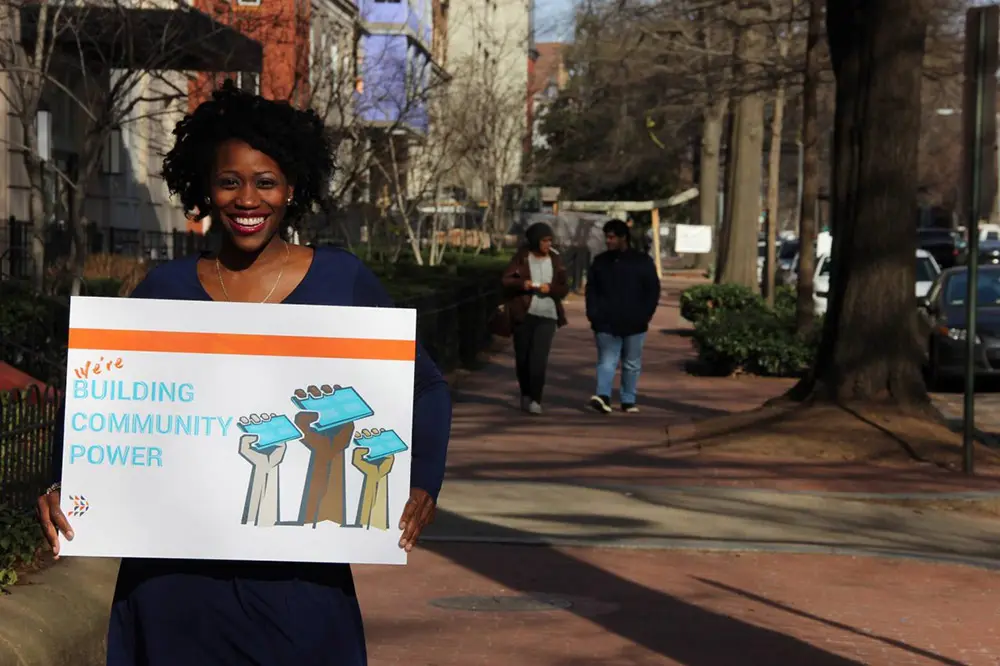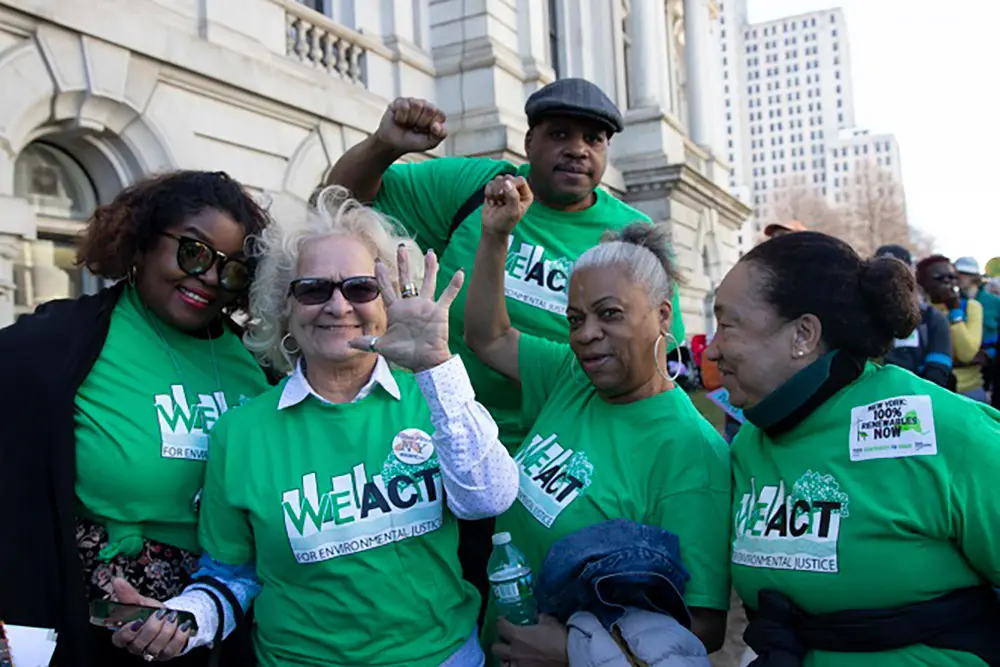Climate resilience as Energy Efficiency
Energy Efficiency is a powerful tool to:
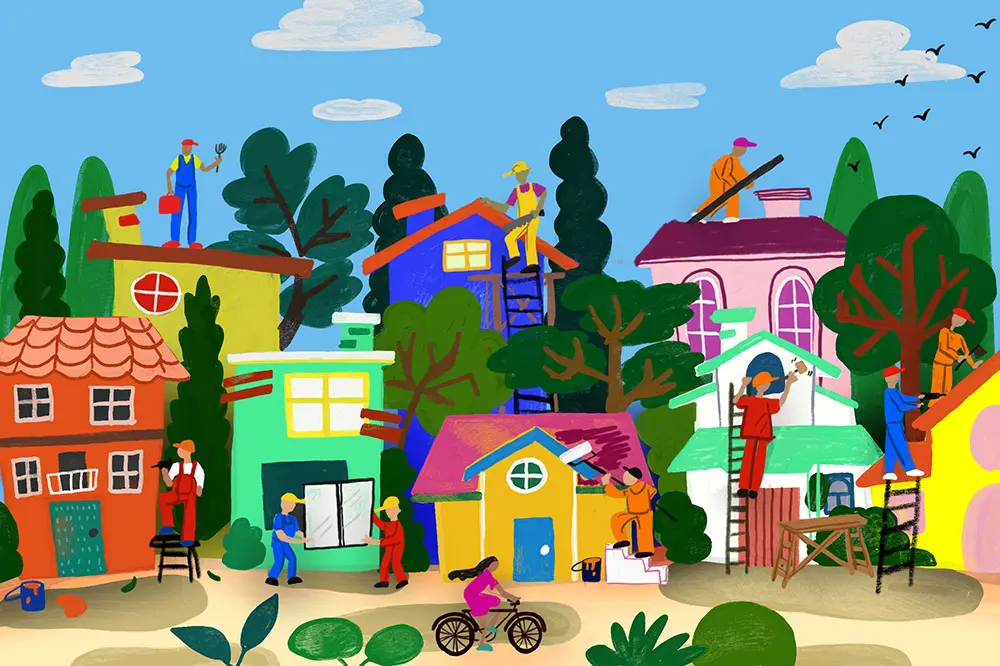
What it is: Energy efficiency simply means using less energy to perform the same task or produce the same result. It’s all about eliminating energy waste. It’s an important first step in any decarbonization process because energy efficiency projects are generally (relatively) low-cost, straightforward, and less resource-intensive than large-scale energy infrastructure. Done well, energy efficiency initiatives reduce the need for the latter.
Energy efficiency is not just low-hanging fruit; it is fruit that is lying on the ground. Steven Chu, Nobel laureate and former U.S. Secretary of Energy (source)
The energy efficiency umbrella is vast, generally referring to technological, operational, material, and design changes that streamline energy use and reduce overall energy consumption. While energy efficiency efforts are underway across all sectors, we’ll primarily be focusing on energy efficiency efforts in regard to residential homes, since that’s where the average community member can affect the most change and where the most climate resilience co-benefits can be accrued!
Examples of mechanisms in the residential energy efficiency toolkit include:
- LED light bulbs
- Insulation
- Air sealing
- Smart thermostats
- Insulated shades
- Heat pumps
- Double and triple-pane windows
- Energy-efficient appliances
- Passive design
- And more!
Some additional context: Formal energy efficiency efforts in the so-called United States began to emerge in the 1970s in response to the oil embargo of 1973, which caused oil prices to skyrocket and led to shortages and rationing. Energy had been relatively cheap and plentiful beforehand, so the oil crisis prompted a new way of thinking about energy and how to optimize it. This era gave way to programs like the Weatherization Assistance Program, a national program dedicated to improving the energy efficiency of homes belonging to low-income families through services like insulation, air sealing, and heating and cooling system upgrades (WAP has helped to weatherize more than 7 million homes since it was introduced in 1976, by the way!), and the Residential Conservation Service, which required certain utilities to offer energy audits and efficiency assessments to their customers. The oil crisis also prompted the establishment of the Department of Energy, which was founded in part to curtail the country’s energy consumption and develop and promote energy-efficient technologies and practices (the aims of the DOE have sinced varied drastically from administration to administration).
Since the 1970s, energy efficiency efforts in the so-called United States have ebbed and flowed with geopolitical issues, fluctuations in energy prices, technological advancements, changes in administration, and concern for environmental issues and the climate crisis. At the federal level, the government has worked to advance energy efficiency by setting mandatory efficiency standards for a range of appliances and equipment, funding research into energy-saving technologies, offering tax credits to businesses and homeowners in exchange for energy-efficient upgrades, and running voluntary programs like Energy Star, which certifies and labels products that meet certain efficiency criteria. Meanwhile, some local and state governments have taken energy efficiency efforts further with a range of initiatives, such as setting rigorous energy efficiency standards for new construction or requiring utilities to achieve certain energy-saving targets. Most recently, the Biden administration passed the Inflation Reduction Act, which is set to make billions of dollars available for energy efficiency and electrification programs across the country.
Continue readingWhy it’s a climate resilience powerhouse:
Slashing greenhouse gas emissions
Energy efficiency measures can be tremendously impactful in reducing greenhouse gas emissions, and therefore mitigating the climate crisis. For instance, in the year after the Weatherization Assistance Program received significant funding from the American Recovery and Reinvestment Act of 2009, they were able to reduce an estimated 7.4 million metric tons of carbon dioxide from residential sector emissions—the equivalent of taking 1.6 million cars off the road for a year—by weatherizing about 340,000 low-income homes. And that’s just the tip of the iceberg! According to a 2019 report from the American Council for an Energy-Efficient Economy, optimizing energy efficiency across all sectors could halve energy use and greenhouse gas emissions in the so-called United States by 2050. They estimate that about a third of the carbon dioxide emission cuts could come from energy-saving measures implemented in the residential sector, with the other most significant cuts coming from the industrial sector, higher-efficiency vehicles and electric vehicles, and expanded transit options.
Continue readingBoosting the viability of a complete transition to renewable energy
To avoid the most extreme climate scenarios and preserve the livability of the planet, it is imperative to swiftly and steeply curtail the global use of fossil fuels and transition to renewable energy. Significantly reducing energy demand will make it much easier to do so. As Jason Hickel explains in Less is More, “If we want the transition [from fossil fuels] to be technically feasible, ecologically coherent and socially just, we need to disabuse ourselves of the fantasy that we can carry on growing aggregate energy demand at existing rates.” He elaborates that all renewable energy projects combined continue to only cover a fraction of new energy demand, lamenting, “Growth keeps outstripping our best efforts to decarbonize.” Energy efficiency measures can help reign in energy demand and give renewable energy the opportunity to overtake fossil fuels. And, since renewable energy infrastructure is not created out of thin air, and can sometimes have serious environmental and social repercussions (see: the devastating costs of large-scale lithium mining, for instance), energy efficiency efforts can help to minimize the harms associated with rapid decarbonization.
Continue readingNothing is cleaner, cheaper, faster or safer than energy efficiency. Carl Zichella, energy efficiency and renewable energy advocate (source)
Curtailing water consumption
Energy efficiency is arguably one of the most effective water conservation strategies since traditional electric power generation is incredibly water intensive. Power plants around the globe collectively consume multiple trillions of gallons of water each year. As the climate crisis exacerbates widespread droughts and water scarcity, meaningfully reducing energy demand will help preserve precious water locally.
Continue readingLowering utility bills
Energy-saving retrofit and weatherization programs have tremendous potential to lower utility bills for those most impacted by high energy burdens (i.e. the proportion of household income spent on energy costs). Low-income and communities of color spend an average of 7.2% of their income on utilities as compared to higher-income households, who spend just 2.3%, and that disparity is directly related to the poor energy efficiency of older buildings, which often have inefficient appliances, aging heating systems, and poor insulation, and rental units, which tend to be upgraded less frequently than owner-occupied homes (note: centuries of systemic racism and racist financial lending practices and housing policies, particularly redlining, have excluded communities of color, and particularly Black folks, from homeownership, resulting in significantly lower home ownership rates compared to white families). Emily Pontecorvo explains in an article about the potential benefits of energy disclosure requirements for landlords, “Landlords also don’t have much incentive to pay for deeper retrofits like air sealing, window replacements, insulation, or more efficient appliances, since they typically aren’t paying the energy bills. The result is that rental units consume 15 percent more energy per square foot than owner-occupied homes in the U.S.” A 2016 study by the American Council for an Energy Efficient Economy and Energy Efficiency for All found that simply bringing rental units up to median energy efficiency standards could eliminate excess energy burdens for a whopping 97% of renting households!
Continue readingMitigating risk during extreme weather and disasters
Community-wide energy efficiency efforts alleviate strain on the power grid, particularly amid extreme weather events when air-conditioning or heating systems may be working overtime. Energy efficiency can therefore help improve grid reliability when folks depend on power the most. If homes do lose power, though, a well-insulated, airtight home can retain heating or stay cool for a longer period of time, reducing health risks like hypothermia, heat stroke, and other impacts associated with heat and cold stress. In fact, during a power outage in cold weather, people inside a home built in the 1980s are expected to experience severe cold stress after the first 23 hours or so, whereas folks inside a passive home, with ample insulation, are expected to have 152 hours, or more than 6 days, before experiencing severe cold stress. As extreme weather intensifies and becomes more frequent, and as power outages become more common, weatherized homes will play a crucial role in keeping folks safe amidst and after disasters.
Continue readingCreating good jobs
Energy efficiency programs create wide-ranging employment opportunities in construction, engineering, manufacturing, consulting, and beyond. Many energy efficiency jobs are highly skilled, well paying, and require on-site work, so they can’t be outsourced. The energy efficiency subsector currently employs 2.2 million people- more than twice as many workers as all fossil fuel industries combined and has the potential to employ many more. Particularly as more and more fossil fuel jobs are phased out, energy efficiency programs offer a promising pathway to more stable, living-wage, local jobs.
Continue readingImproving physical and mental wellbeing
By adding insulation, sealing up holes in walls and windows, and updating appliances, windows, and equipment, weatherization programs can also help to stabilize indoor temperatures, improve ventilation, prevent indoor moisture and mold, remove toxic gases and irritating particulates from the air, and upgrade overall comfort and air quality. Therefore, weatherized homes can improve respiratory and cardiovascular health, alleviate allergies, asthma, and headaches, and boost mental wellbeing.
Continue readingThe nuance / caveats:
Energy efficiency is fantastic, but it’s not a panacea. There are a handful of things to keep in mind when considering the role that energy efficiency can play in larger climate resilience efforts:
- Weatherization and energy-saving retrofits are often the least accessible to the folks who are most impacted by excessively high energy burdens and would therefore most benefit from greater energy efficiency—low-income and communities of color. For instance, many programs that subsidize efficiency upgrades effectively exclude renters and still require some level of upfront investment, and a significant chunk of homes are rendered ineligible for programs like the Weatherization Assistance Program due to health and safety issues, like leaking roofs or mold. In order to avoid exacerbating energy injustice, it’s critical that folks who are most impacted by excessively high energy burdens have a seat at the table when developing and implementing energy efficiency programs, so that common barriers can be identified and overcome.
- While weatherization programs can alleviate energy burdens and advance energy justice, upgraded homes (and particularly rental units) have been linked to rising housing costs, displacement, and gentrification (the trend has even been dubbed “low-carbon gentrification”). To avoid unintended consequences, folks who would be most impacted by potential rent hikes or displacement must have a seat at the table when developing and implementing energy efficiency programs. Climate policy should never be at odds with housing justice.
- High energy efficiency does not necessarily indicate low energy consumption. A 2022 study analyzing racial inequity in household energy efficiency and carbon emissions in the so-called United States found that large, energy-efficient homes tend to use significantly more energy than small, energy-inefficient homes. The study also found that per capita energy use and greenhouse gas emissions were highest in whiter, wealthier neighborhoods across the country. To meaningfully reduce energy consumption, energy efficiency efforts need to be coupled with diligent energy conservation efforts, particularly amongst wealthy folks, corporations, governments, and other large-scale institutions. (Note: Energy efficiency focuses on maximizing output per unit of energy consumed, whereas energy conservation emphasizes reducing overall energy usage through behavior changes, lifestyle shifts, and other conscious choices.)
- It bears repeating that energy efficiency alone does not guarantee a reduction in energy consumption. In fact, Jason Hickel warns in his book Less Is More that “when we innovate more efficient ways to use energy and resources, total consumption may briefly drop, but it quickly rebounds to an even higher rate … because companies use the savings to reinvest in ramping up more production” and because individuals and communities are less scrupulous with their energy consumption. Particularly if the global economy remains tethered to the imperative of endless growth, energy demand will keep rising even if energy-intensive processes become more efficient. Therefore, to successfully transition away from fossil fuels, energy efficiency and other decarbonization efforts must also be coupled with resistance toward the current growth-obsessed economic paradigm.
Growth keeps outstripping our best efforts to decarbonize. Jason Hickel, economic anthropologist and author (source)
Spotlights
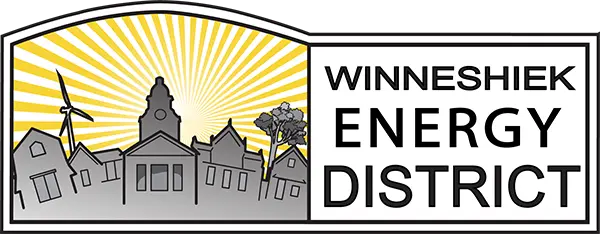
Winneshiek Energy District (WED) is a Northeast Iowa-based organization that was founded in 2010 with the mission to lead Winneshiek County’s transition to 100% locally-owned, efficient, and renewable energy by 2050. They developed the Energy District model (which has since spread to more than ten other counties!) based upon the Soil and Water Conservation District model that emerged in the 1930s to serve as community-based hubs of technical expertise, leadership, and funding for counties around the country, and they’re working to help nurture a similar network of “universal local” energy hubs across the midwest and beyond. WED understands that energy efficiency is foundational to their goal of successfully ushering in a clean energy transition, so they’ve provided technical assistance, energy planning, and/or direct installation of energy-saving measures to more than 1300 households, hundreds of farms and businesses, and dozens of nonprofits, local governments, and other institutions, collectively saving households and small businesses several million dollars. They’ve also engaged in state policy advocacy around energy efficiency, and after successfully advocating for energy efficiency funding for Green Iowa AmeriCorps, they partnered with the organization to provide weatherization services and other energy-saving measures to more than 1000 homes where low-income residents, seniors, veterans, and disabled folks live.
Consider supporting Winneshiek Energy District and their growing Energy District network by making a donation here.
Continue reading about Energy EfficiencyGroundswell is a Washington DC-based nonprofit committed to building community power through community solar projects, resilience centers, energy efficiency programs, and research initiatives. Their Georgia-based energy efficiency program, Save with SOUL, aims to reduce utility bills for low and moderate-income households (including renters and homeowners!) with higher-than-average utility bills. They’ve developed their program thoughtfully to sidestep a lot of the traditional barriers to energy efficiency programs. For instance, they utilize a Pay As You Save approach, which means that Groundswell provides the upfront payment for the energy efficiency improvements, and then costs are ultimately covered by the energy savings on the utility bill. When working with renters, they engage landlords in the process to prevent potential negative consequences from energy upgrades. CEO Michelle Moore explains, “We ask all landlords to sign a public pledge that commits them to leaving the savings with residents. So, if the SOUL program comes in and installs a new HVAC unit, the landlord can’t increase the rent on that basis.”
Consider making a donation to Groundswell here or signing up for their newsletter here.
Continue reading about Energy Efficiency
Mountain Association is a Kentucky-based nonprofit and Community Development Financial Institution dedicated to advancing a just transition from coal and building strong and sustainable Appalachian communities. They developed an energy efficiency program, How$martKY, when East Kentucky Power Cooperative approached Mountain Association with the concern that they might need to purchase power from other providers to cover their customers’ growing demand for power. Together, they decided that they’d instead focus on helping their members use less energy—and save on their utility bills. How$martKY coordinates with energy co-ops and contractors to help orchestrate energy audits, home retrofits, and financing, making the process as seamless as possible for homeowners and tenants. How$martKY also uses a Pay As You Save model, so residents don’t need to pay for energy upgrades upfront. The Mountain Association assists local businesses, faith groups, nonprofits, and governments with energy-saving measures, too. A grocery store that they worked with was able to realize energy savings upwards of $47,000 per year, which allowed them to grow their staff!
Consider supporting the Mountain Association’s work by making a gift here.
Continue reading about Energy Efficiency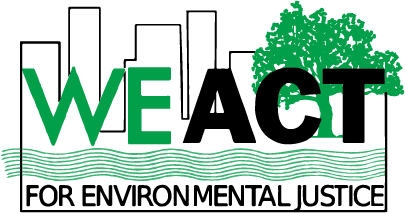
WE ACT for Environmental Justice is a community-based organization that was founded in 1988 to address environmental racism in West Harlem. The organization has since evolved to be an anchor of the global environmental justice movement. Since many low-income New Yorkers and New Yorkers of color are impacted by higher-than-average energy burdens, and are also uniquely excluded from many weatherization and energy-saving programs (in Harlem, for instance, more than 85% of residents are renters), WE ACT is currently working hard to advance energy efficiency efforts and ensure that all New Yorkers are able to reap the benefits of energy efficiency measures in their homes. The past few years, WE ACT has been championing the Energy Efficiency, Equity, & Jobs Act (S8052), a piece of legislation that would remove some of the barriers of typical energy efficiency programs and would ensure that low-income and communities of color receive an equitable share of energy efficiency funding and jobs. WE ACT’s Green Institute, a workforce development program that has trained more than 800 local residents since 2014, also offers free technical training programs and professional development services to equip folks with the skills needed to work in the energy efficiency space.
Consider getting involved with WE ACT for Environmental Justice by becoming a member here, subscribing to their mailing list here, or making a donation here.
Continue reading about Energy EfficiencyResearch + reflection prompts:
- Which organizations or activists in your community are already engaged in energy efficiency work? What types of assistance or resources are they calling for?
- Which policies and incentive/technical assistance programs are already in place in your city, state, or region to expand and deepen energy efficiency efforts?
- Perform an informal energy audit of your home. Are there drafts around windows, doors, electrical outlets, and along baseboards (you can use incense sticks to indicate if the smoke is wavering or changing direction, which can help indicate a draft)? Is your heating and cooling system more than 15 years old? Is the system being serviced annually, and are air filters being replaced regularly? Are your lightbulbs LED? Are appliances and electronics Energy Star certified? To the best of your knowledge, what’s the insulation like in your attic/basement walls, ceilings, floors, or crawl spaces? Is your water heater insulated, and what’s the thermostat temperature set to (you can turn it down to around 120 degrees Fahrenheit)?
- Jot down what a day in the life looks like for you. From cranking the air conditioner to laundering clothes to running errands, which behaviors demand the greatest energy consumption? What are the biggest structural barriers to “decarbonizing” your day?
- What would a deeply joyful day look like for you that requires very little energy consumption?
How to get engaged:
Advocate
If you’re passionate about energy efficiency and have the bandwidth: Advocate for rigorous energy efficiency standards, policies, and programs in your city or state. Begin by tapping into energy efficiency advocacy efforts that are already underway in your community and looking to communities around the world who are leading the way. Study the legislation they’ve passed, and talk with organizers who have been involved with energy efficiency policy and program implementation efforts elsewhere. Keep in mind that rigorous energy performance standards can extend to new buildings, appliances, equipment, industrial practices, vehicles, and more, and advocating for energy efficiency can also look like advocating for more and better public transit, walkability, bike paths, affordable housing near city centers, and so on. And there are lots of other policy levers to explore beyond effeincy standards, too, such as tax credits, training programs for contractors, building performance ratings and disclosure mandates, grants and loans for energy efficiency-focused small businesses, and more. Particularly if your community is rebuilding after a disaster, it’s a critical time to be vocal for energy efficiency and resilience standards in new developments and planning.
Organize
If you’re excited about energy efficiency but would rather avoid government spaces: Be a consumer, employee, or investor activist. Organize with others to demand that corporations that you shop at, work for, or invest in substantially reduce their energy use. Be wary of greenwashing; it’s not enough for large corporations to buy carbon offsets or expand their renewable energy infrastructure if they’re not simultaneously cutting their energy use. If you’re engaged with a community institution, like a school, church, or recreation center, organize with others to weatherize buildings, prioritize sustainable design in any new buildings, transition the vehicle fleet to a more fuel efficient or electric option, and so forth.
Renewables & Efficiency
If your home could benefit from weatherization: Check to see if you’re eligible for incentive or subsidization programs! Rewiring America, gov, and the Database of State Incentives for Renewables & Efficiency are great places to start. Talking with neighbors is a great starting point, too! Your city or state may also have some public incentives available that can be deployed for home retrofits, and your utility may have a Pay-As-You-Save program to help finance energy efficiency projects upfront. If you live in an apartment building, consider organizing with other tenants to demand that your landlord weatherizes the building.
A smattering of resources for continued learning + action:
Short Reads
- “Why Energy Efficiency is Key to Reducing Climate Change Risks” by Kate Zerrenner in Triple Pundit
- “The many ways energy efficiency can boost your community’s resilience” by David Ribeiro in the American Council for an Energy-Efficient Economy
- “How Energy Efficiency Will Power Net Zero Climate Goals” by Alyssa Fischer in International Energy Agency’s Commentaries
- “What if apartment listings had to include energy-efficiency scores?” by Emily Pontecorvo in Grist
- “Energy efficiency is leaving low-income Americans behind” by Michael Isaac Stein in Grist
- “Most States Don’t Ensure Utility Energy Efficiency Programs Benefit Underserved Households” by Mark Rodeffer in the American Council for an Energy-Efficient Economy
- “Deep Retrofits Can Halve Homes’ Energy Use and Emissions by Ben Somberg in the American Council for an Energy-Efficient Economy
- “Black and Latino neighborohods pay more for energy despite far lower emissions” by Adam Mahoney in Grist
- “Weatherization is Key to Effective, Low-Cost Building Electrification” by Mike Specian in the American Council for an Energy-Efficient Economy
- “The WAP we need” by Emily Atkin in Heated
- “The Wonders of Weatherization: Improving Equity through Stimulus Funding” by Sneha Ayyagari and Jake Glassman in the Rocky Mountain Institute
- “The Inflation Reduction Act Could Transform the US Buildings Sector” by David Smedick, Rachel Golden, and Alisa Petersen in the Rocky Mountain Institute
- “Efficient, Resilient Buildings Can Help Texas Weather the Next Crisis” by John Matson and Sneha Ayyagayi in the Rocky Mountain Institute
Guides & Reports
- Halfway There: Energy Efficiency Can Cut Energy use and Greenhouse Gas Emissions in Half by 2050 written by Steven Nadel and Lowell Ungar, published by the American Council for an Energy-Efficient Economy
- 2023 Energy Efficiency Impact Report by the Alliance to Save Energy, American Council for an Energy-Efficient Economy, and the Business Council for Sustainable Energy
- Pathways to Residential Deep Energy Reductions and Decarbonization written by Jennifer Amann, Rohini Srivastava, and Nick Henner, published by the American Council for an Energy-Efficient Economy
- Advancing Equity through Energy Efficiency Resource Standards written by Weston Berg and Jasmine Mah, published by the American Council for an Energy-Efficient Economy
- Enhancing Community Resilience through Energy Efficiency written by David Ribeiro et al., published by the American Council for an Energy-Efficient Economy
Long Reads
- ★ Less is More by Jason Hickel
- Musings of an Energy Nerd: Toward an Energy-Efficient Home by Martin Holladay
- The Passivhaus Handbook: A Practical Guide to Constructing and Retrofitting Buildings for Ultra-Low Energy Performance by Janet Cotterell and Adam Dadeby
- Passive House Details: Solutions for High-Performance Design by Donald Corner, Jan C. Fillinger, and Alison G. Kwok
Watch
- The tradeoffs of building green: A 10-minute TED talk by Catherine Mohr about following the data, not the hype, when it comes to reducing embodied energy at home

